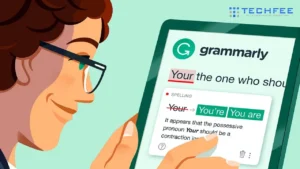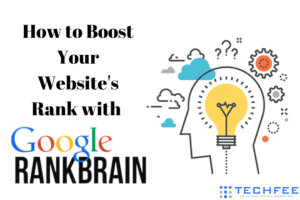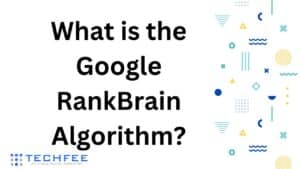Unlock the mystery of favicons – those tiny but impactful symbols of your website’s identity. Explore their significance and unleash their power with our comprehensive guide, starting with the fundamental question: What is a Favicon?
In the vast web world, where every pixel matters and every detail affects how people see things, the favicon is a small but powerful symbol of your website’s personality.
This small icon is often forgotten, undervalued, or just misread, but it has a lot of power.
Welcome to our full guide on favicons, where we show you how powerful they are. We are going on a trip to find out why these seemingly small things are so important in the digital world.
We will do this by breaking down the technical details and looking at how they affect brand identity and user experience.
Come with us as we delve into the depths of favicons and teach you how to use them to make your website successful.
Table of Contents
ToggleWhat is a Favicon?
“Favorite icon,” which is short for “favorite image,” is a small picture or icon that shows up in different places on a web computer.
The main goal of this icon is to visually reflect the website and give users a way to find it among all of their open tabs or bookmarks.
From their start in the early days of the internet, favicons have changed along with the way people browse the web.
Favicons were first added to Internet Explorer 5 in 1999 as an easy way for users to identify their favorite websites in the browser’s bookmark menu.
But quickly, they were used for more than just bookmarks. They were added to computer tabs, address bars, and even search results pages.
There have been a number of important steps forward in the growth of favicons over the years. When Internet Explorer 7 came out in 2006, it added support for clear PNG favicons, making it possible to make more complex designs that looked better.
Later, improvements in web technology and browser standards have improved the favicon experience.
For example, high-resolution favicons are now used to support more and more high-density displays.
Even though technology is always changing, favicons are still an important part of web design and the user experience. They help websites stand out in the huge amount of online content.
Website owners can use favicons to improve company identity and user engagement by learning about their history and purpose.
Technical Aspects of Favicons
When talking about the technical side of favicons, it’s important to know about file types and size limits.
Most favicons come in more than one file type, such as ICO, PNG, and GIF.
Each has its own pros and cons when it comes to compatibility.
The ICO format is the most common and supports various icon sizes in a single file, which makes it perfect for working with all browsers.
PNG favicons, on the other hand, support transparency better and are better for designs with more details.
Website owners need to not only pick the right file type, but also make sure that files are the right size so that they look good on all devices and browsers.
For normal browser tabs, favicons are 16×16 pixels, and for high-density displays, they are 32×32 pixels. It’s important to make favicons in a range of sizes so that they work well on a variety of screen formats and devices.
To get the best results when making favicons, you need to use the right tools and methods. There are many free favicon generators and graphic design programs that can help you change images into favicon formats and make them work better on the web.
Also, methods like cropping, scaling, and optimizing picture compression can help reduce file size without lowering quality, making sure that files load quickly and the user experience is smooth.
By learning how favicons work technically, website owners can make sure that their icons are formatted properly, optimized, and work on a lot of different devices and browsers.
This care for detail gives their websites a clean and professional look, which also helps people remember their brand and get involved with it.
Why are favicons important?
There are many important reasons why favicons are so important in the digital world.
For starters, they’re strong visual cues that help build brand personality and make websites more visible.
Website owners can make their brand more recognizable and build a stronger footprint on the web by using a unique icon. This is especially helpful in browser tabs and bookmark lists that are already full.
Aside from that, favicons make the user experience much better. Even though there is a lot of information out there, these small icons make it easy for people to find and immediately recognize their favorite websites.
This improved accessibility makes users happier and encourages them to come back, which in turn builds a good impression of the website and brand.
A favicon also makes the style of a website look more professional. A well-made symbol shows that the website owner pays attention to the little things and wants to give users a smooth and consistent experience.
A favicon is the finishing touch that makes a website look better and more trustworthy. It can be a simple graphic emblem or a sleek company logo.
Basically, favicons aren’t just little pictures; they’re strong tools that help people remember your brand, make the user experience better, and make your website look more professional.
When website owners know how important they are, they can use them to their advantage to improve their online profile and keep their audience interested.
Favicons and Brand Identity
Favicons are a key part of building brand personality and making it easier to find in the vast world of computers. For beginners, they act as little brand agents for a website by showing up next to its name in search results, bookmark lists, and browser tabs.
Using the same favicon on all of these platforms helps create visual cohesion and strengthens brand association, making it easier for users to find and remember the website among all the other material online.
For the favicon to have the most impact on company identity, it needs to be designed well. It is very important to follow design concepts like simplicity, scalability, and relevance when making a favicon.
A favicon should clearly and briefly show what the brand is all about. It can do this by using recognizable colors, fonts, or symbols that match the website’s general style.
Also, favicons should be made so that they can be resized so that they look good on all devices and screen resolutions without losing any information or clarity.
Website owners can improve brand recognition and connect with their audience more deeply by carefully creating favicons that reflect the values and attitude of their brand.
A well-designed favicon is like a silent ambassador for a brand; it tells users a lot about the brand and stays with them as they explore the digital world.
Favicons and User Experience
Many website owners forget that favicons are an important part of making websites easier to navigate.
When these small icons are hidden in browser tabs or bookmarks, they help users easily find and identify websites when there are a lot of tabs open at once.
Favicons make it easier to navigate by giving each site a unique look, which is especially helpful when multiple tabs are open at the same time. Imagine a user switching between tabs.
A well-designed favicon can help them find their way back to your website in all the noise. Favicons also help people remember and recognize your brand, which strengthens their relationship with your website.
Favicons do more than just help people find their way; they have a subtle but important effect on guests’ minds. Visual stimuli have a big effect on how people think, and favicons take advantage of this natural trend.
A well-designed favicon can make people think of good things, which can build trust and credibility in their thoughts.
On the other hand, a dull or common favicon might make people think less of your website without you meaning to.
So, website owners need to be aware of how favicons can make people feel and use them as powerful tools to change how people think about their sites.
The favicon is like a silent ambassador for your brand; it tells every user what your brand is all about, whether it’s professionalism, playfulness, or sophistication.
By using the psychological effects of favicons, website owners can make the user experience more interesting and remembered, which will help them connect with their audience more deeply.
What are the Benefits of Adding a Favicon to Your Site?
Adding a logo to your website has many benefits that go beyond just making it look better.
Favicons are an important part of optimizing your online profile because they make the user experience better and help search engines find your site.
How Favicons Help with SEO: Favicons help your website’s general SEO strategy in a number of ways. The user experience is very important to search engines, and having a favicon on your site can make both users and search engines like it more.
Favicons help people remember and find websites by adding a visually appealing feature that makes it easier to navigate.
This indirectly lowers bounce rates and gets people more involved with websites, which are things search engines look at when they rank websites.
Effect on Search Engine Rankings: Favicons may not have a direct effect on search engine rankings, but their appearance can have an effect on SEO efforts in a roundabout way.
As we already said, favicons improve the user experience, which can change measures like bounce rate, time on site, and pages per session. These are all important signals for search engine algorithms.
A well-designed favicon can also help people recognize and trust your brand, which may indirectly lead to higher search engine results over time.
Favicons improve SERPs and click-through rates: There is a lot of competition on search engine results pages (SERPs), so every part is important for getting people to click. You can use favicons to make your website stand out in search results.
This makes it easier for people to find and makes it feel more welcoming. There are studies that show that search results with favicons get more clicks than those without then those with favicons.
Adding a favicon to your site not only makes it look better in SERPs, but it also makes people more likely to click through to your site, which increases your general online visibility and traffic.
How to Add a Favicon to Your WordPress Blog?
Adding a favicon to your WordPress blog is straightforward. Depending on your familiarity with WordPress and your preferences for customization, there are several methods you can choose from.
Method 1: Using the WordPress Customizer (Easiest): For novice users or those looking for a hassle-free approach, the WordPress Customizer offers the simplest way to add a favicon to your blog.
Here’s how:
- Log in to your WordPress dashboard.
- Navigate to Appearance > Customize.
- In the Customizer menu, look for the “Site Identity” or “Site Identity & Logo” option.
- Click on it to expand the settings.
- Look for the “Site Icon” or “Site Identity Logo” section.
- Click on “Select Image” to upload your favicon.
- Choose the image you want to use as your favicon from your media library or upload a new one.
- Once selected, click on “Save & Publish” to apply the changes.
Method 2: Using a Favicon Plugin: If you prefer a more automated approach or want additional features, you can use a WordPress plugin dedicated to managing favicons.
Here’s how:
- Log in to your WordPress dashboard.
- Navigate to Plugins > Add New.
- Search for a favicon plugin, such as “All in One Favicon” or “Favicon by RealFaviconGenerator.”
- Install and activate the plugin of your choice.
- Once activated, go to the plugin’s settings page.
- Follow the plugin’s instructions to upload your favicon and configure any additional settings.
- Save your changes.
Method 3: Adding the Favicon Manually (for Experienced Users): For users comfortable with accessing WordPress files and making manual modifications, adding a favicon directly to your theme files is an option. Here’s how:
- Prepare your favicon image and ensure it meets the recommended dimensions (usually 16×16 pixels or 32×32 pixels).
- Log in to your WordPress hosting account via FTP or through the file manager in your hosting control panel.
- Navigate to the root directory of your WordPress installation.
- Locate your active theme folder (usually found under wp-content/themes).
- Upload your favicon image to the root directory of your theme folder.
- Access your theme’s header.php file.
- Add the following code within the <head> section of the file: <link rel=”icon” href=”<?php echo get_stylesheet_directory_uri(); ?>/favicon.ico” type=”image/x-icon”>
- Save the changes and upload the modified file back to your server.
Regardless of the method you choose, adding a favicon to your WordPress blog is a quick and effective way to enhance its branding and visual appeal.
Choose the method that best suits your skill level and preferences, and enjoy the benefits of a polished and professional-looking website.
Favicons Across Different Devices
Making sure that your favicon looks the same on all devices is important for keeping your brand’s personality consistent and giving users a smooth experience.
Here’s how favicons work on different devices and what website owners should think about:
Favicons can be seen on both desktop and mobile browsers: You can see favicons on both desktop and mobile browsers on different platforms.
There are, however, changes in how they are shown. On desktop computers, favicons usually show up in the tab next to the page title.
When users add your website as a link, they may show up in more than one place on a mobile browser, such as in the browser tab, the bookmark list, or the home screen.
When it comes to compatibility, the.ico format for favicons works with most current browsers. If you want to make sure that your images work on all platforms and devices, you should also offer other formats like.png or.svg.
This makes sure that your favicon looks good on all browsers and devices that people visit your site with.
Thoughts on flexible Design: In today’s mobile-first world, flexible design is essential for giving users the best experience on all devices with different screen sizes.
Website owners need to think about how their favicons will work on screens of different sizes and orientations when they add them.
According to responsive design principles, favicons should be able to be resized and should look good on high-resolution screens without getting fuzzy or losing its clarity.
Because of this, it’s important to make favicons in vector formats like.svg or high-resolution.png forms so they can be used on a wide range of devices.
Website owners should also make sure that the favicon is the right size and placed in the browser tab or bookmark list so that it works best on mobile devices.
Favicons should be easy to recognize even when they are shown in smaller sizes. This helps keep the brand consistent and makes it easier for mobile users to navigate.
Website owners can make sure that their favicons accurately represent their brand identity on all devices by prioritizing compatibility with both desktop and mobile browsers and taking flexible design into account. This makes it easier for users to recognize and interact with the brand.
Best Practices for Favicon Implementation
Implementing favicons effectively requires adherence to best practices to ensure optimal visibility and usability.
Let’s delve into the key considerations for favicon implementation:
Placement and Usage Guidelines:
Consistent Placement: Place the favicon in the root directory of your website to ensure it is easily accessible to all pages. Use the <link> element in the <head> section of your HTML to specify the location of the favicon.
Size and Format: Create your favicon in multiple sizes to cater to different devices and resolutions. The standard size for favicons is 16×16 pixels, but it’s also recommended to include larger sizes (e.g., 32×32 pixels for high-density displays). Provide your favicon in .ico format for compatibility with most browsers, and consider offering alternative formats such as .png or .svg.
Clear and Recognizable Design: Design your favicon to be visually appealing and easily recognizable at a glance, even in small sizes. Use simple shapes, clear typography, and distinct colors to ensure it stands out in browser tabs and bookmark lists.
Test Across Devices: Test your favicon across various browsers and devices to ensure it displays correctly and maintains clarity and visibility. Consider using online tools or browser extensions to simulate how your favicon appears on different platforms.
Common Mistakes to Avoid:
Ignoring Accessibility: Ensure that your favicon is accessible to all users, including those with visual impairments. Avoid using complex or overly detailed designs that may be difficult to distinguish.
Inconsistency Across Platforms: Maintain consistency in your favicon design across different platforms and devices to reinforce your brand identity. Avoid using different favicons for desktop and mobile versions of your website, as this can lead to confusion among users.
Poor Quality Images: Use high-quality images for your favicon to prevent pixelation or blurriness, especially on high-resolution displays. Avoid using low-resolution or stretched images, as they can detract from the professionalism of your website.
Overcomplicated Designs: Keep your favicon design simple and concise to ensure quick recognition by users. Avoid cluttered or overly intricate designs that may be difficult to discern at smaller sizes.
By following these best practices and avoiding common mistakes, website owners can ensure that their favicons effectively enhance their brand presence and contribute to a positive user experience across all platforms.
Quick Tips for Creating a WordPress Favicon
It doesn’t have to be hard to make a favicon for your WordPress site.
Here are some quick tips that will help you make a favicon that really stands out and fits your brand:
Keep It Simple: Choose a style that is simple and easy to recognize, even when it’s small. Avoid designs that are too complicated or detailed because they might not stand out when they are blown up.
Use Graphics That Are Easy to Read: Pick pictures, icons, or names that are simple and easy to understand. When you think about how small a logo is, clarity is very important.
Maintain Brand Consistency: Make sure that your favicon fits in with your brand’s look and style and goes with the general look of your website. Keeping all of your branding parts the same helps people remember your brand.
Pick the Right Colors: Pick colors that go with your brand and make it easier to see. Don’t use too many colors in your favicon; it will look busy and hard to understand.
Try Out Different Sizes: Make copies of your favicon in different sizes to make sure it looks good on all devices and screen widths. Check it out on desktop and mobile browsers to make sure you can see and understand it.
Think About Contrast: To keep your symbol visible and easy to read, make sure it stands out against different background colors. Your favicon will look better if it has a good contrast ratio.
Use Online Tools: Use online favicon generators or graphic design tools to make the process of making and sharing favicons easier. A lot of the time, these tools come with designs and instructions to make sure your favicon meets standard requirements.
Optimize for File Size: To make your website run better and load faster, keep the file size of your favicon small. Aim for a balance between file size and picture quality to make sure that the page loads quickly without losing quality.
By using these quick tips, you can make a favicon for your WordPress site that looks professional, helps people remember your brand, and makes the experience better for them.
Conclusion
Finally, favicons aren’t just little pictures; they’re powerful tools that can have a big effect on your website’s success, branding, and user experience.
Suppose website owners understand how favicons work technically. In that case, how they help reinforce brand identity, and how they can improve user navigation and involvement, they can get the most out of these seemingly small elements.
Remember to follow best practices for application so that your website works on all devices and platforms as you work to make it better with favicons.
Consistency, clarity, and accessibility are important considerations whether you’re adding a favicon to your WordPress blog or directly to your website.
Also, don’t forget that tracking and stats for favicons can give you useful information about how people use your site and how engaged they are with it.
By keeping an eye on data like click-through rates and how people interact with your favicon, you can improve your branding strategy and the user experience even more.
Sign up for our email list to stay in touch with us as you continue to work on your website’s branding and user experience.
Get the latest news, tips, and information on improving your website, including details on making the most of favicons.
Also, please share this complete guide with other website owners and favicon fans. It will help them get the most out of favicons in their online projects.
Let’s use the power of favicons to make our websites look better, be easier to use, and have more of an effect for both users and brands.
Do comment below with your thoughts and opinions about this blog post what you liked the most or if you want me to add anything.
Frequently Asked Questions
What is the recommended size for a favicon?
The recommended size for a favicon is 16x16 pixels, but it's also advisable to include larger sizes such as 32x32 pixels for high-density displays.
Can I change my favicon without affecting SEO?
Yes, you can change your favicon without affecting SEO. Just ensure that the new favicon is properly implemented using the appropriate HTML markup or CMS settings.
Do favicons affect website loading speed?
Favicons typically do not significantly affect website loading speed as they are small files. However, optimizing the favicon file size can help minimize any impact on loading times.
How do I troubleshoot favicon display issues?
To troubleshoot favicon display issues, check if the favicon is correctly placed in the root directory of your website, ensure the HTML markup is correct, and test across different browsers and devices.
Are there any legal considerations when using favicons?
When using favicons, consider any trademark or copyright issues associated with the design. Ensure that you have the legal right to use the favicon and that it does not infringe on any existing trademarks.
How to add favicon in HTML?
To add a favicon in HTML, use the <link> element within the <head> section of your HTML document, specifying the location of the favicon file using the "rel" attribute.
Why is favicon used?
Favicons are used to visually represent a website or brand in browser tabs, bookmark lists, and shortcuts. They enhance brand recognition and contribute to a more professional and cohesive online presence.
What type of image is a favicon?
A favicon is typically a small image file in formats such as .ico, .png, or .svg, designed to be displayed alongside a website's URL in a browser tab or bookmark list.
How to create a good favicon?
To create a good favicon, keep the design simple, recognizable, and reflective of your brand identity. Use clear graphics, appropriate colors, and test the favicon across different devices to ensure visibility and clarity.


 Twitter
Twitter Facebook
Facebook Linkedin
Linkedin





